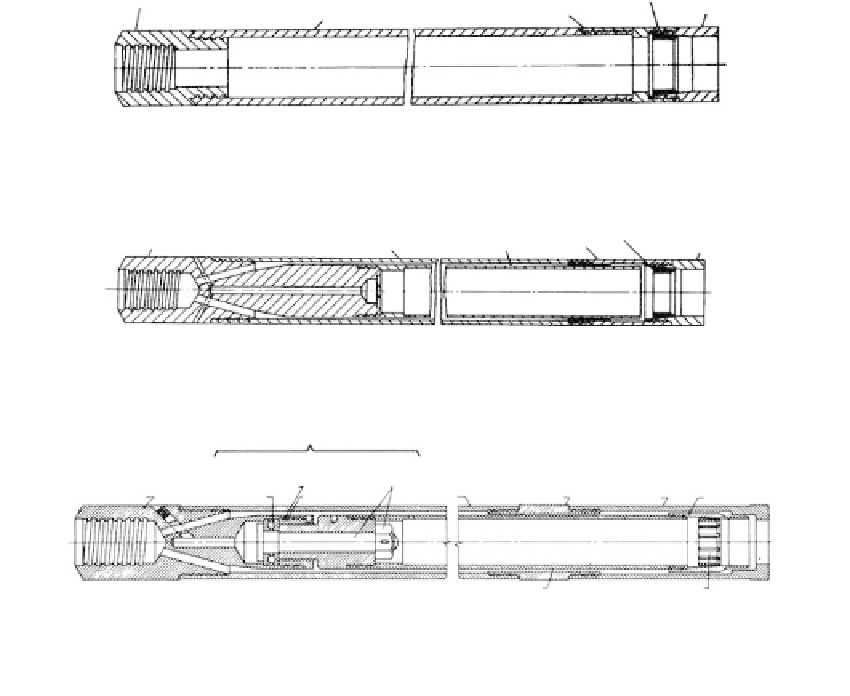Environmental Engineering Reference
In-Depth Information
Core lifter
Core barrel head
Coring bit
Reaming shell
Core barrel
FIGURE 2.79
Single-tube core barrel. (Courtesy of Sprague and Henwood, Inc.)
Reaming
shell
Core lifter
Core barrel head
Outer tube
Inner tube
Coring bit
FIGURE 2.80
Rigid-type double-tube core barrel. (Courtesy of Sprague and Henwood, Inc.)
Hanger bearing assembly
Pin and
nut
Inner tube
head
Outer
tube
Core barrel head
outer
Bearing
retainer
Reaming
shell
Ball bearings
Blank bit
Lifter base
Inner tube
Core lifter
FIGURE 2.81
Swivel-type double-tube core barrel, series M. (Courtesy of Sprague and Henwood, Inc.)
Causes of Low Recovery
Rock conditions
: Fractured or decomposed rock and soft clayey seams cause low recovery,
for example, as shown in
Figure 2.78.
Rock quality can vary substantially for a given loca-
tion and rock types as illustrated in
Figuers 2.84
and
2.85,
which show a formation of gran-
ite gneiss, varying from sound and massive to jointed and seamy. Core recovery in the
heavily jointed zone is illustrated in
Figure 2.86.
Coring equipment
: Worn bits, improper rod sizes (too light), improper core barrel and bit,
and inadequate drilling machine size all result in low recovery. In one case, in the author's
experience, coring to depths of 30 to 50 m in a weathered to sound gneiss with light drill
rigs, light “A” rods, and NX double-tube core barrels resulted in 40 to 70% recoveries and
20 to 30% RQD values. When the same drillers redrilled the holes within a 1m distance
using heavier machines, “N” rod and HX core barrels, recovery increased to 90 to 100%
and RQDs to 70 to 80%, even in highly decomposed rock zones, layers of hard clay, and
seams of soft clay within the rock mass.
Coring procedure
: Inadequate drilling fluid quantities, increased fluid pressure, improper
drill rod pressure, or improper rotation speed all affect core recovery.
Integral Coring Method
Purpose
Integral coring is used to obtain representative cores in rock masses in which recovery is
difficult with normal techniques, and to reveal defects and discontinuities such as joint
openings and fillings, shear zones, and cavities. The method, developed by Dr. Manual
Rocha of Laboratorio Nacional de Engenheira Civil (LNEC) of Lisbon, can produce cores


